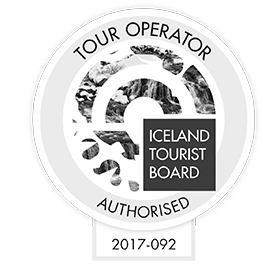- Vehicle Guide
- Passenger cars
- Estate
- Electric
- 4x4 SUVs
- Suzuki Jimny 4x4
- Dacia Duster 4x4
- Suzuki Vitara 4x4
- Suzuki Vitara auto 4x4
- Dacia Bigster 4x4
- Kia Sportage 4x4 Auto
- Kia Sportage PHEV 4x4 auto
- Mitsubishi Outlander PHEV 4x4 auto
- Toyota Rav4 4x4
- Toyota Rav4 4x4 auto
- Kia Sorento 4x4 auto
- Toyota Landcruiser 150 4x4 auto
- Toyota Landcruiser 250 4x4 auto
- Landrover Discovery 5 4x4 auto
- Landrover Defender 4x4 auto
- Prestige
- Minivans
- 4x4 Camper
- Motorhomes
- Driving in Iceland
- Our services
- Locations & Hours
- Travel Inspiration
- South Iceland: A complete guide
- Reynisfjara Beach in Iceland - Your Guide to a Safe Visit
- Best Times to Visit the Golden Circle in Iceland
- North Iceland: A Complete Guide for Drivers
- East Iceland A Complete Guide for Drivers
- West Iceland The Complete Driver’s Guide
- Your Ultimate Guide to Exploring Iceland’s Ring Road
- Driving the Diamond Circle in Iceland: Your Ultimate Guide
- Driving Iceland's Golden Circle: Your Ultimate Guide
- A 10-Day Itinerary in Iceland: Tips + Ideas
- The Perfect Itinerary for 7 Days in Iceland
- The Best Time to See the Northern Lights in Iceland with a Rental Car
- Renting a Camper in Iceland: The Complete Guide
- Getting to Iceland: A Comprehensive Guide on How to Reach the Land of Fire and Ice
- Nature Bath Locations in Iceland: A Complete Guide
- Iceland with Kids: A 5-Day Self-Drive Itinerary
- Winter Driving in Iceland: A Comprehensive Overview for Foreign Tourists
- The Total Solar Eclipse in Iceland – August 12, 2026
- Exploring Iceland's National Parks on a Self-Drive Adventure
- Exploring Iceland's Wonders: A Comprehensive Guide to Activities and Car Rentals
- Springtime in Iceland – Your Comprehensive Travel Guide
- Exploring Iceland's Most Popular Highland Routes
- The Pearls of Westfjords: The Ultimate Guide
- Exploring Iceland's Hidden Gems | Off-the-Beaten-Path Adventures
- Driving in Iceland in June: Tips for a Safe and Scenic Summer Road Trip
- Driving in Iceland in July: Tips, Routes & Rentals
- Driving in Iceland in August: Late-Summer Freedom on the Open Road
- Guide to Skaftafell Iceland Self-Drive A Journey Through Fire and Ice
- Eco-Friendly Road Trips in Iceland, Sustainable Travel Tips
- Photographer’s Paradise Top Scenic Drives in Iceland for Stunning Shots
- Iceland's Folklore and Legends A Road Trip Through Mythical Sites
- Iceland’s Midnight Sun and How to Make the Most of 24-Hour Daylight
- Exploring Iceland’s Viking Heritage: Top Historical Sites
- Chasing Waterfalls: A Road Trip to Iceland’s Most Spectacular Cascades
- Iceland's Volcanic Wonders: A Self-Drive Tour of Active and Dormant Volcanoes
- Tee Off in the Land of Fire and Ice: A Guide to Golfing in Iceland
- Birdwatching in Iceland: Puffins and Beyond
- Iceland’s Diverse Beaches: Beyond the Black Sands
- Icelandic Horses: The Unique Breed of the North
- Beyond the Ring Road: Iceland’s Hidden Scenic Drives
- Iceland’s Ice Caves: A Year-Round Adventure
- Wildlife Watching in Iceland: Where and When to Go
- Iceland’s Hidden Hot Springs: A Self-Drive Guide to Secret Soaks
- Navigating Iceland’s Weather: What to Expect Each Season
- Tröllaskagi Peninsula: Iceland’s Mountainous Marvel — A Scenic Road Trip with Höldur
- Mastering Iceland's Roundabouts: A Driver’s Guide
- Essential Tips for Renting a Car in Iceland
- Navigating Iceland’s One-Lane Bridges: Your Guide to Safe and Scenic Crossings
- Exploring Iceland’s Film Locations by Rental Car
- 5 Must-Visit Destinations Within Two Hours of Keflavík Airport
- Seasonal Car Rental Tips for Iceland’s Summer Festivals
- Understanding Iceland's F-Roads: How to Drive Safely Into the Highlands
- What Makes Iceland Unique: Top 15 Highlights for an Unforgettable Journey
- Driving and Hiking in Harmony: Explore Iceland's Natural Wonders with Höldur Car Rental
- Best Car to Rent in Iceland?
- Avoiding Common Car Rental Mistakes in Iceland
- Making Your Car Rental in Iceland Child-Friendly: Tips for Stress-Free Family Travel
- Exploring Akureyri, Iceland’s Northern Gem, with EasyJet and Europcar
- Renting a Manual or Automatic Car in Iceland
- Discover the Arctic Coast Way in Iceland with Höldur Car Rental
- How to Save on Fuel Costs During Your Iceland Road Trip
- Electric vs. 4x4 Rentals in Iceland: Which is Right for Your Trip?
- Top Scenic Detours Off Iceland's Ring Road
- Top Safety Tips for First-Time Drivers on Iceland’s Roads
- Cultural Pit Stops Along Iceland’s Ring Road
- Your Guide to Exploring Stuðlagil Canyon by Car: Iceland’s Basalt Beauty Awaits
- Day Trip Ideas From Reykjavik by Rental Car
- Visit Glymur Waterfall: The Ultimate Self-Drive Adventure from Reykjavík
- Discover the Volcanic Wonders of Lake Mývatn by Car
- Discovering the Magic of Snæfellsnes Peninsula by Car
- Your Self‑Drive Guide to Gullfoss Waterfall
- A Guide to Seljalandsfoss Waterfall in Iceland: Explore by Car
- Exploring Reykjanes Peninsula A Self Drive Guide
- Exploring Iceland Landmannalaugar by 4x4
- A Beginner's Guide to River Crossings in Iceland
- Best Car Rental Offers for Iceland’s Summer Adventures
- Your Self‑Drive Guide to Þingvellir National Park
- Your Ultimate Guide to Geysir, Iceland: All You Need to Know
- How to Pay for the Vaðlaheiðargöng Tunnel
- Your Guide to Visiting Jökulsárlón Glacier Lagoon
- The Diamond Beach in Iceland: A Sparkling Wonder Worth Visiting
- Parking fines in Iceland: how to pay and what to do if you receive one
- Where to find overnight parking in Reykjavík: a local’s guide for travellers
- How to park for free in Reykjavík: tips to save on your Iceland trip
- How to pay for parking in Reykjavík - A friendly guide for drivers in Iceland
- Game of Thrones Filming Locations in Iceland: A Self-Drive Guide
- How to Choose the Right Car Rental at Keflavík Airport
- Flying Within Iceland: Your Guide to Domestic Routes and Regional Airports
- Top 3 Must-See Attractions on Iceland's Golden Circle
- Hidden Gems Along the Golden Circle Route
- Your Essential Guide to Iceland: Currency, Culture, and Car Rental Tips
- How to Plan the Perfect Golden Circle Self-Drive Tour
- The Comprehensive Guide to Rental Car Sizes at Keflavik Airport
- Húsafell & Hallmundarhraun: Hidden Lava Field Adventures by Car
- Iceland Weather by Month: What to Expect and How to Drive Safely with Holdur Car Rental
- A Guide to Iceland’s Quirky Roadside Attractions
- Exploring Iceland’s Lava Tubes | Self-Drive Cave Adventures with Höldur Car Rental
- Coolcation in Iceland: Self-Drive Your Summer Escape to the North
- Driving Iceland’s Coastal Roads: A Guide to Lesser-Known Peninsulas
- Top Tips for Driving in Iceland Safely Year-Round
- The Best Rest Stops and Viewpoints Along Iceland's Ring Road
- Driving in Iceland in September: Embrace the Autumn Adventure
- Your Guide to Exploring Fjaðrárgljúfur – South Iceland’s Fairytale Canyon
- Explore Reykholt on a Self-Drive Tour in Iceland
- How to Choose the Right Insurance for Your Iceland Car Rental
- Hiking Múlagljúfur Canyon: Iceland’s Hidden Gem You Can’t Miss
- Understanding Iceland's Weather and How It Affects Driving Conditions
- Dyrhólaey: A Complete Self-Drive Guide to Iceland's Breathtaking South Coast
- Where to See Iceland’s Tectonic Plates Up Close
- Scenic Journey on Kjalvegur Road 35 Reykjavik to Akureyri
- Guide to Visiting Svartifoss with a Rental Car
- Kerið Crater Lake in Iceland: A Self-Drive Guide
- Your Complete Guide to Stokksnes, Iceland with a Rental Car
- Hengifoss Waterfall in Iceland: The Ultimate Self-Drive Guide
- Your Complete Guide to Visiting Skógafoss Waterfall with a Rental Car
- Into the Heart of Þórsmörk: Iceland’s Valley of Thunder
- Dynjandi Waterfall in Iceland: The Ultimate Self-Drive Guide
- Visiting Ásbyrgi Canyon in North Iceland by Car: A Complete Self-Drive Guide
- Driving in Iceland in October: Embrace the Autumn Transition
- Hraunfossar: Iceland’s Hidden Gem for Self-Drive Travellers
- Barnafoss Waterfall: Iceland’s Raging Cascade with a Legend
- Driving in Iceland in November: Your Complete Guide to a Spectacular Autumn Adventure
- Fishing in Iceland: All You Need to Know
- Öxarárfoss Waterfall in Iceland: A Self-Drive Guide with Höldur
- Life in Iceland: Essential Guide to Living in the Land of Fire and Ice
- People of Iceland - 12 Fun Facts About Icelanders
- Glaumbær Turf Houses: A Self-Drive Guide to Iceland’s Living History
- Húsavík: Whale Watching Capital of Iceland
- Svínafellsjökull Glacier: A Self-Drive Guide to Iceland’s Ice Giants
- Kirkjubæjarklaustur: A Historic South Coast Gem
- Vík í Mýrdal: South Iceland’s Coastal Treasure
- Namaskard: A Self-Drive Guide to Iceland’s Geothermal Wonderland
- Laufás Heritage Site: Where Iceland’s Past Lives On
- Navigating Iceland's Gravel Roads: Tips for a Safe and Smooth Drive
- Iceland's Best Stargazing Spots for Self-Drive Travellers
- Iceland's Best Picnic Spots: Scenic Stops for Self-Drive Adventures
- Top 5 Family-Friendly Hiking Trails Accessible by Rental Car
- 15 Tips for Travelling to Iceland
- How to Plan a Winter Photography Road Trip in Iceland
- Visiting Gljúfrabúi Waterfall — A Self-Drive Guide
- How to Spot Puffins in Iceland: A Self-Drive Adventure
- Your Essential Guide to Winter Tyres and Safe Driving in Iceland
- Iceland’s Most Active Volcanoes: A Self-Drive Guide
- Iceland’s Most Scenic Bridges and River Crossings: A Self-Drive Guide
- Iceland’s Most Instagrammable Spots for Self-Drive Travellers
- How Cold Is It in Iceland During Winter? A Self-Drive Guide
- Explore Dimmuborgir: A Self-Drive Guide to Iceland's Dark Castles
- The Ultimate Guide to Iceland’s Top 5 Waterfalls by Car
- Iceland’s Best Scenic Routes for Autumn Foliage: A Self-Drive Guide
- The Best Time to Visit Iceland for Self-Drive Travellers
- Self-Drive Adventures to Iceland’s Remote Lighthouses
- Selfoss Waterfall Self-Drive Guide: Explore Iceland Your Way
- All About the Icelandic Sheep
- Vestrahorn: A Self-Drive Guide to Iceland’s Stokksnes Peninsula
- Höfn, Iceland: The Lobster Town Self-Drive Guide
- Exploring Arnarstapi: A Self-Drive Guide
- A Guide to Iceland's Seasonal Foods for Your Road Trip
- Hverfjall Crater, Iceland: A Self-Drive Guide
- Self-Drive Guide to Visiting Askja
- A Self-Drive Guide to Visiting Kerlingarfjöll
- A Self-Drive Guide to Gunnuhver Geothermal Area
- Skriduklaustur, Iceland: A Self-Drive Guide to History & Culture
- Your Ultimate Guide to Visiting the Blue Lagoon in Iceland
- Borgarnes, Iceland: Top Things to Do & Self-Drive Guide
- A Guide to Glaciers in Iceland
- Car Rental Insurance in Iceland: What’s Usually Included, What’s Not & How to Choose
- Best Car Models for Iceland’s Terrain: Recommendations by Route
- Solo Traveller’s Guide to Self-Driving in Iceland
- Exploring Iceland’s Arctic Circle: What to See and Do
- How to Plan a Budget-Friendly Road Trip in Iceland
- The History of Iceland’s National Day: A Self-Drive Celebration
- Where to Spot Whales in Iceland: A Self-Drive Guide
- The Diamond Circle vs. The Golden Circle: Which Route is Right for You?
- Embracing a Greener Journey: Sustainability in Iceland
- Granni: A Self-Drive Guide to Iceland’s Neighboring Waterfall
- Háifoss: A Self-Drive Guide to Iceland’s Tallest Waterfall
- Iceland's Best Camping Spots for Road Trippers
- Gjáin: A Self-Drive Guide to Iceland’s Hidden Oasis
- Iceland's Hidden Waterfalls: Beyond the Tourist Trails
- Hjálparfoss: A Self-Drive Guide to Iceland’s Helping Falls
- Seasonal Self-Drive Itineraries in Iceland: What’s Open When?
- Kirkjufell: A Self-Drive Guide to Iceland’s Most Photographed Mountain
- Fjallabak Nature Reserve: A Self-Drive Guide to Iceland’s Rugged Highlands
- Hrafntinnusker: A Self-Drive and Hiking Guide to Iceland’s Obsidian Wilderness
- When to Visit Iceland: Northern Lights and Ice Caves vs. Hiking and Highland Adventures
- Visiting Laugarvatn Fontana Spa with a Rental Car: A Relaxing Icelandic Getaway
- Hvítserkur Rock: A Self-Drive Guide to Iceland’s Dragon of the North
- Skiing in Iceland: A Self-Drive Guide for Winter Adventurers
- Visiting the Mývatn Nature Baths by Car: A Self-Drive Guide
- Visiting Vök Baths in East Iceland: A Self-Drive Guide
- Visiting Skútustaðir Pseudo-Craters: A Self-Drive Guide
- Visiting Hljóðaklettar: A Self-Drive Guide on the Diamond Circle
- The Ultimate Guide to Exploring Reykjavik with a Rental Car
- Visiting Seljavallalaug: A Hidden Gem in South Iceland
- Guide to Sólheimajökull Glacier by Iceland Car Rental
- Eyjafjallajökull: Iceland’s Glacier Volcano
- Ísafjörður, Iceland: Your Ultimate Self-Drive Guide to the Westfjords
- What Continent is Iceland In? A Traveler's Guide
- Katla Volcano: A Guide to Iceland's Sleeping Giant
- The Magic of Icelandic Water: A Traveler's Guide
- A Guide to Exploring Akureyri by Rental Car
- A Self-Drive Guide to the Krafla Volcanic Region
- 12-Day Iceland Self-Drive: The Complete Itinerary
- Hekla Volcano: A Self-Drive Guide to Iceland's Gateway
- Visiting Deildartunguhver: A Self-Drive Guide to Europe’s Most Powerful Hot Spring
- Exploring Borgarfjörður: A Self-Drive Guide to West Iceland
- Exploring Stórurð: A Self-Drive and Hiking Guide to East Iceland
- Visiting the Forest Lagoon in North Iceland: A Self-Drive Guide
- Driving in Iceland in December: Embrace the Winter Wonderland
- Exploring Grábrók: A Self-Drive Guide to Iceland’s Volcanic Crater
- Exploring Látrabjarg: A Self-Drive Guide to Iceland’s Westernmost Point
- Iceland Car Hire Tips for UK Drivers: What You Need to Know
- 4-Day Iceland Winter Itinerary: The Best of the South
- Mount Mælifell: Iceland’s Emerald Volcano
- How Long to Drive Around Iceland? A Self-Drive Guide
- Driving in Iceland in January
- Exploring Djúpavík: A Self-Drive Guide to Iceland’s Remote Westfjords
- What to Wear in Iceland: Tips for Every Season
- Things to Do in Stykkishólmur: A Self-Drive Adventure Through Iceland’s Magical West
- The Secret Lagoon: Iceland’s Hidden Gem of Relaxation and Discovery
- The Silver Circle of Borgarfjörður: Your Ultimate Self-Drive Guide
- Snæfellsjökull: A Journey to Iceland’s Glacier of Legends
- Car Rental Iceland 4x4: Best 4WD Options for Your Trip
- What to See in Iceland: 20 Places You Don’t Want to Miss
- How to Prepare for an Iceland Road Trip
- Your Guide to Visiting Fagrifoss Waterfall by Car
- Exploring Stakkholtsgjá Canyon: A Self-Drive Adventure in Iceland
- Kolugljúfur Canyon: A Guide to Iceland's Hidden Gem
- Exploring Kvernufoss: A Hidden Gem in South Iceland
- Skógar Museum: A Journey Through Iceland's History
- 2 Days in Iceland: The Perfect Itinerary
- Exploring Berserkjahraun: A Self-Drive Guide to Iceland’s Lava Fields
- Driving in Iceland in February: Your Complete Guide
- Iceland Daylight Hours by Month: Planning Your Trip
- Petra’s Stone Collection: A Self-Drive Gem in East Iceland
- Iceland's New Kilometer-Based Road Tax: Everything You Need to Know
- Krýsuvíkurbjarg Cliffs: Self-Drive Guide to Iceland’s Wild Coast
- Brimketill: The Reykjanes Peninsula’s Natural Lava Pool
- Exploring Eldhraun Lava Field: A Self-Drive Guide to Iceland’s Volcanic Marvel
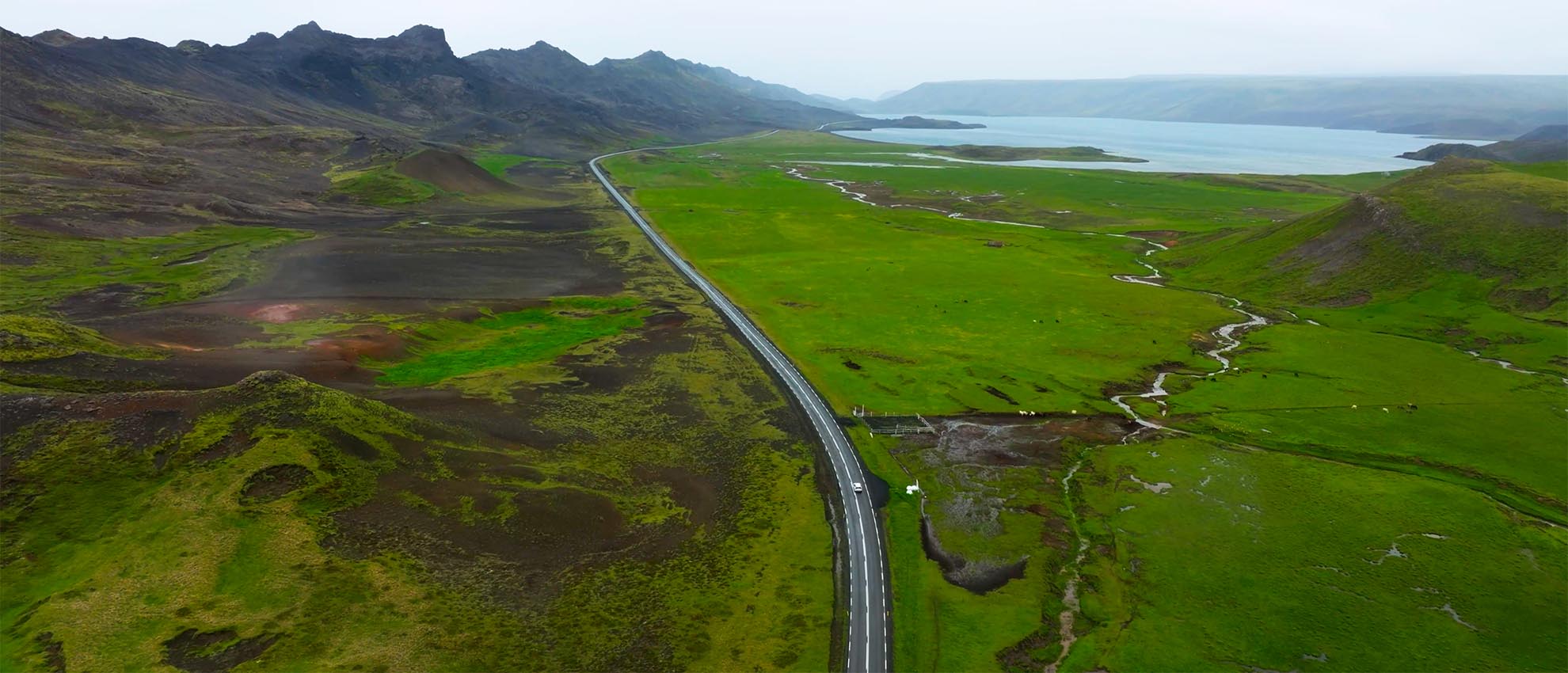
Practical Travel Tips
Your Guide to Exploring Iceland’s Ring Road
15.02.2024
Iceland’s Ring Road, or Route 1, is the country's most vital highway, connecting you to hundreds of miles of dramatic and varied landscapes. A journey along this route offers a thrilling way to experience the Land of Fire and Ice. By renting a car, you can discover the glaciers, volcanoes, rugged fjords, and welcoming towns that make Iceland so memorable.
This guide provides everything you need for a safe and enjoyable trip around the Ring Road. You will learn what to see, how long your trip should take, and key practical advice for your adventure. We'll cover everything from the best car rental for your Iceland Ring Road trip to hidden gems you won't want to miss.
Essential Facts About Iceland’s Ring Road
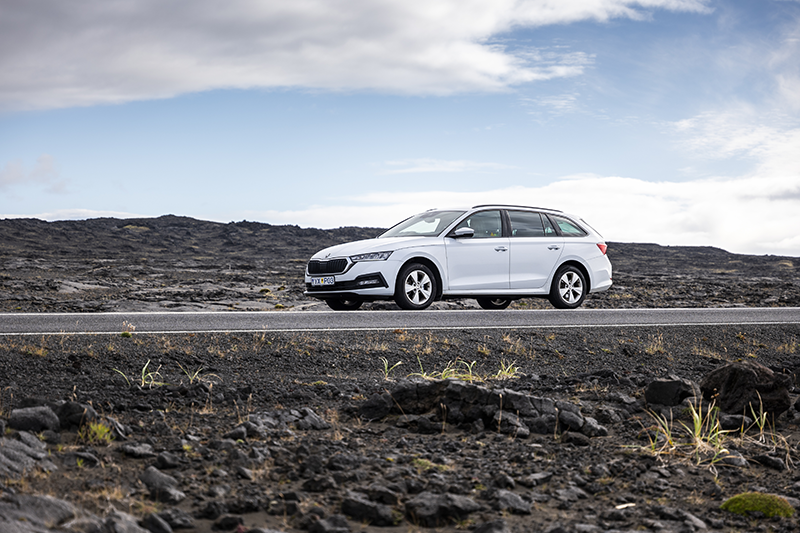
Beyond its fame as a top travel itinerary, Route 1 is a crucial piece of Iceland's infrastructure. Fully opened in 1974, it transformed how people travel around the country. Before its completion, a journey from Vík to Höfn on the south coast required a massive detour north through Akureyri, turning a 150-mile trip into a 600-mile odyssey.
Today, the Ring Road creates a complete loop around the island, making the country more connected and accessible for locals and visitors. Its total length is 1,322 km (821 mi), offering a manageable but substantial road trip. However, it's important to know that for most of its length, it's a single-lane road in each direction. While it is Iceland's main highway, you'll need to take certain precautions.
Top Attractions on Iceland’s Ring Road
The Ring Road passes through most of Iceland’s regions, putting nearly all major attractions within easy reach. Only the Highlands, the Westfjords, and the Snæfellsnes peninsula are not directly on the route, but they are easily accessible detours.
Here are some of the best stops on Iceland's Ring Road, traveling anti-clockwise from Reykjavík.
1. Vík í Mýrdal and Reynisfjara Beach
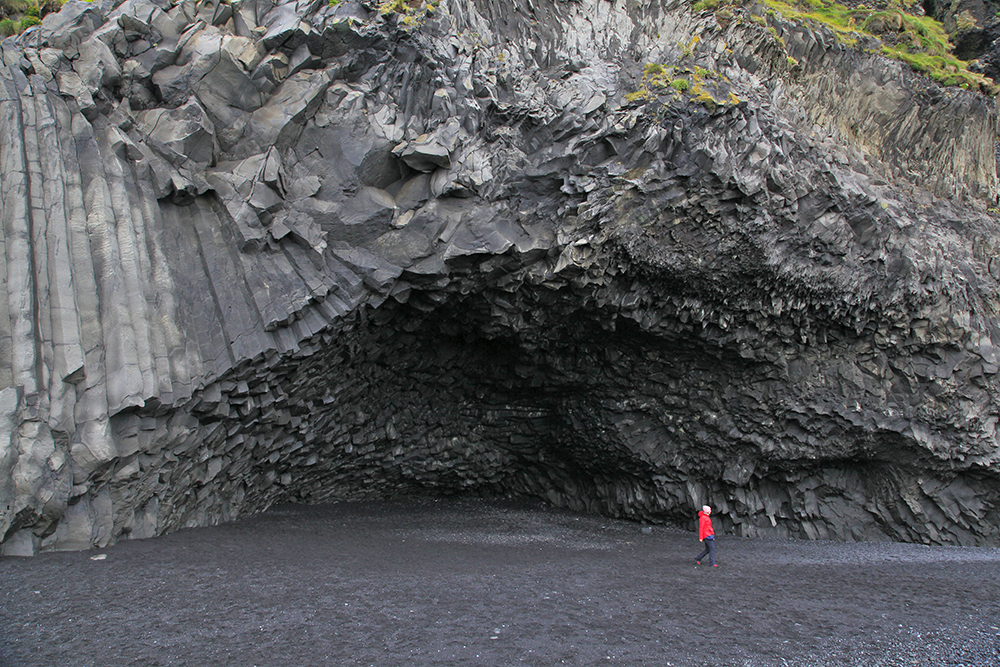
Vík í Mýrdal, a village on Iceland's south coast, is about 190 km (120 mi) east of Reykjavík. It’s a popular overnight stop with a breathtaking location. Overlooking cliffs and rocky spires that rise from the North Atlantic, the village offers an atmospheric experience in any season.
Be sure to explore the famous black-sand beaches. Reynisfjara, with its unique basalt rock formations and the scenic Dyrhólaey peninsula, is a must-see. The powerful waves here can be dangerous, so always admire them from a safe distance.
2. Vatnajökull National Park
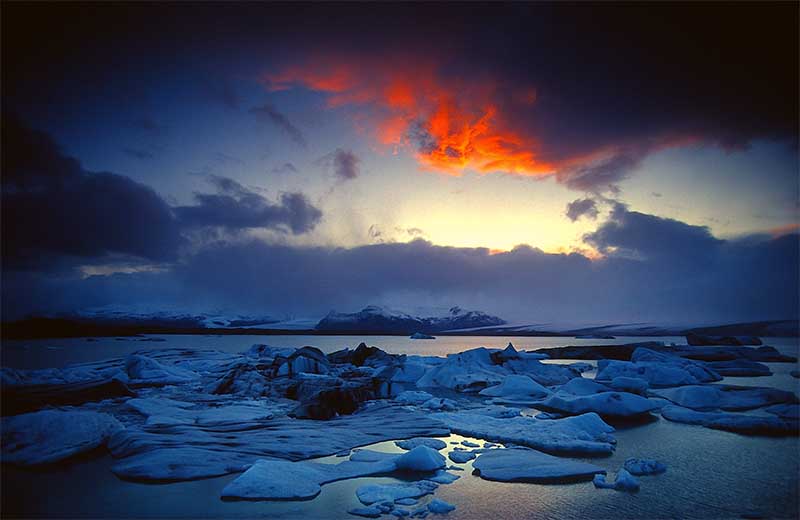
Vatnajökull is Iceland’s largest national park and home to its largest glacier. As you travel east along the south coast, its enormous ice cap is impossible to miss. The park is a showcase of Iceland's natural majesty, offering glacier tours and hiking trails in the Skaftafell nature reserve.
One of the park's top sights is Jökulsárlón, a glacial lagoon just off the Ring Road where you can see icebergs floating in the water. Across the road, Diamond Beach awaits, where chunks of ice glisten on the black sand before melting into the sea.
3. Egilsstaðir and the Eastfjords
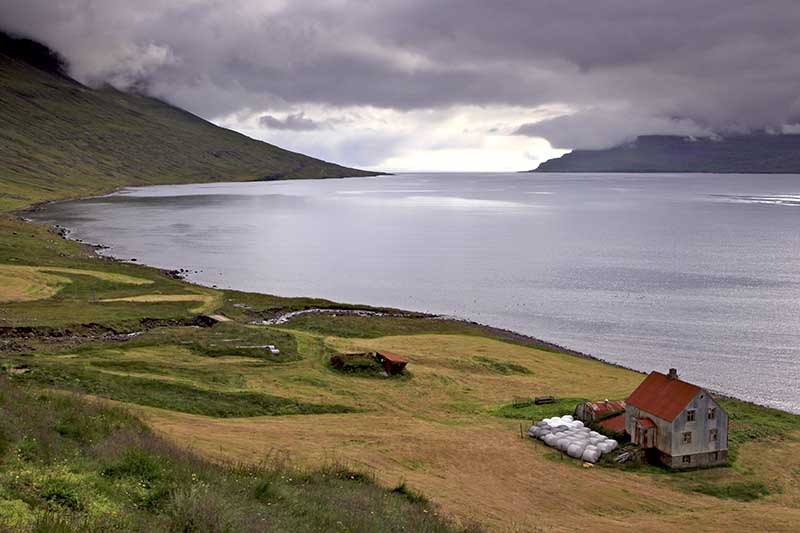
Continuing anti-clockwise, you will enter the rugged coastline of the Eastfjords. This region is known for its deep fjords and high mountains. Egilsstaðir, situated on the Ring Road, is an excellent base for exploring. The town offers a range of services, including restaurants, museums, and even geothermal spas like Vök Baths.
Discover the region's unique culture in towns like Fáskrúðsfjörður, which was originally settled by French fishermen. You can still see their influence at the French hospital and in local festivals. Don't miss the chance to try traditional Icelandic food at a local eatery, perhaps sampling fresh seafood or lamb soup.
4. Lake Mývatn
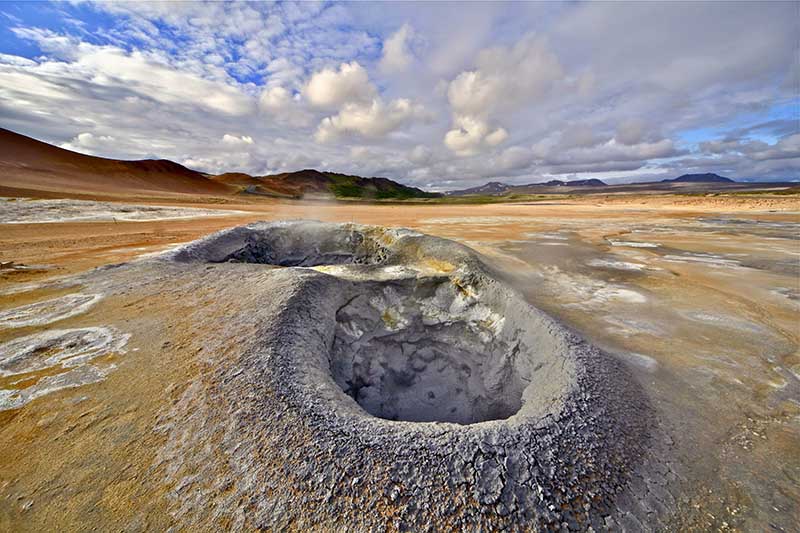
Lake Mývatn is a scenic highlight of North Iceland. The lake is the centerpiece of a vast volcanic landscape filled with strange rock formations, hot springs, and geothermal areas. A key attraction is Dimmuborgir, a lava field known as the "dark castles," offering an eerie and memorable landscape right next to the lake. The area is also a hotspot for birdwatching, particularly in the summer.
5. Akureyri and Eyjafjörður
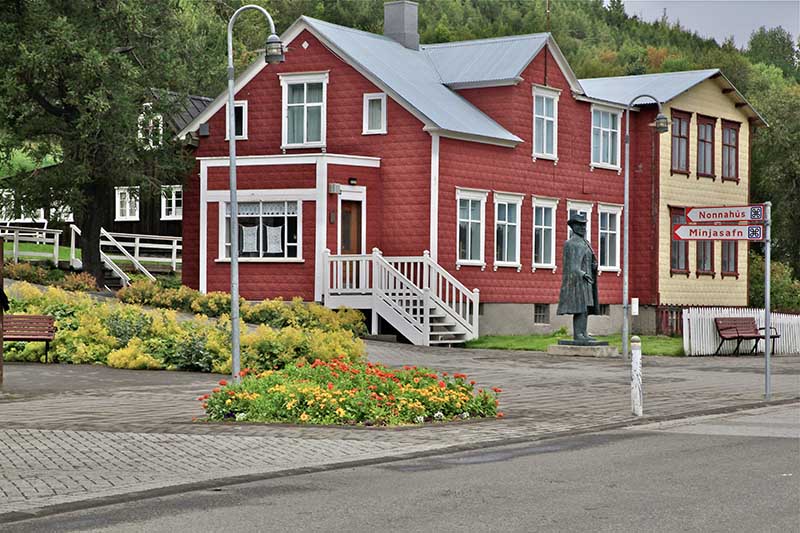
Known as the "Capital of the North," Akureyri is a vibrant town on the banks of Eyjafjörður, a long and scenic fjord. Akureyri is a prime location for whale watching, with tours frequently spotting pods in the fjord and beyond. The town also boasts the tranquil Akureyri Botanical Garden and a growing food and culture scene, making it a perfect multi-day stop.
How Many Days to Drive the Ring Road in Iceland?
The beauty of a self-drive tour is its flexibility. With a total driving time of at least 17-18 hours, you’ll want enough time to enjoy the sights. We recommend a minimum of 7 days, but 10-12 days allows for a more relaxed pace and deeper exploration, including some off-the-beaten-path Ring Road attractions.
Here are three sample itineraries to help you plan.
The "Quick" Trip: 7-Day Ring Road Itinerary
This itinerary covers the main highlights with 2-4 hours of driving each day.
- Day 1: Reykjavík to Vík. 188 km (117 mi). Visit Seljalandsfoss and Skógafoss waterfalls.
- Day 2: Vík to Höfn. 270 km (168 mi). Explore the south coast and Vatnajökull National Park.
- Day 3: Höfn to Egilsstaðir. 250 km (155 mi). Drive through the scenic Eastfjords.
- Day 4: Egilsstaðir to Akureyri. 247 km (153 mi). Stop at Lake Mývatn on your way to the Capital of the North.
- Day 5: Akureyri. Enjoy a whale watching tour or explore the town.
- Day 6: Akureyri to Borgarnes. 314 km (195 mi). A longer driving day heading west.
- Day 7: Borgarnes to Reykjavík. 75 km (47 mi). Consider a detour to Þingvellir National Park before returning to the city.
You might also be interested in: The Perfect Itinerary for 7 Days in Iceland.
The "Classic" Tour: 10-Day Ring Road Itinerary
A 10-day tour offers more time to explore, making it a great option for an Iceland Ring Road itinerary for families.
- Day 1: Reykjavík to Selfoss. 60 km (37 mi). Tour the Golden Circle.
- Day 2: Selfoss to Vík. 130 km (80 mi). Explore the south coast’s waterfalls and black-sand beaches.
- Day 3: Vík to Höfn. 270 km (168 mi). Stop at Jökulsárlón glacier lagoon.
- Day 4: Höfn. Use the town as a base to explore Vatnajökull National Park.
- Day 5: Höfn to Egilsstaðir. 250 km (155 mi). Drive through the Eastfjords.
- Day 6: Egilsstaðir to Lake Mývatn. 174 km (108 mi). Explore the geothermal area.
- Day 7: Akureyri & Diamond Circle. Visit Húsavík or take a sealife tour.
- Day 8: Akureyri to Borgarnes. 314 km (195 mi). Your longest driving day.
- Day 9: Explore Snæfellsnes Peninsula. Discover "Iceland in miniature."
- Day 10: Borgarnes to Reykjavík. 75 km (47 mi). Return to the capital.
You might also be interested in: A 10-Day Itinerary in Iceland: Tips + Ideas.
The "Complete" Tour: 12 Days or More
A longer trip allows you to discover hidden gems on the Ring Road and beyond.
- Visit Icelandic Spas: Relax at the Blue Lagoon, Sky Lagoon, or smaller local pools.
- Tour the Arctic Coast Way: Explore the wild northern coastline.
- Venture into the Westfjords: Experience Iceland’s most remote and untamed region.
- Enjoy a Budget-Friendly Ring Road Trip: With more time, you can camp and prepare your own meals to save money.
You might also be interested in: 12-Day Iceland Self-Drive: The Complete Itinerary.
Preparing for Your Ring Road Journey
Proper preparation is key to a safe and enjoyable trip. Here are essential tips for planning your drive.
1. Hire the Right Vehicle
The Ring Road is paved and suitable for any vehicle type. However, if you plan to explore off the main route, especially on Iceland's unpaved F-roads, a 4x4 SUV is required. These highland roads are often closed in winter. For a more sustainable journey, consider an electric vehicle. EV charging stations are increasingly common in towns along the route.
2. Plan for the Season and Weather
Iceland's weather is notoriously changeable. Pack waterproof layers and sturdy boots for any season. More fundamentally, though, the weather will affect road conditions.
- Summer Road Trip in Iceland (June-August): Enjoy mild temperatures and long daylight hours, which make for easier driving. This is peak season, so book accommodation and your car rental well in advance.
- Winter Driving on Iceland's Ring Road (October-April): Be prepared for snow, ice, and potential road closures. Winter driving can be challenging, but you'll be rewarded with fewer crowds and the chance to see the Northern Lights. Your rental car from Holdur comes equipped with studded winter tires. Always check umferdin.is for up-to-date road conditions.
3. Understand Driving Rules and Etiquette
- Speed Limits: 90 km/h on paved roads like the Ring Road, and 30-50 km/h in towns.
- Off-Road Driving: Strictly prohibited. It causes irreversible damage to the fragile landscape.
- Stopping for Photos: Always pull over in a safe, designated area. Never stop in the middle of the road.
- Toll Roads: The only toll is the Vaðlaheiðargöng tunnel near Akureyri.
- Camping: Only sleep in designated campsites. Wild camping in vehicles is not permitted.
- More information: Discover more by reading our complete guide to driving in Iceland
4. Addressing Travel Challenges
- Fuel Availability: Gas stations are found in every village, many open 24/7. In remote areas, they may not be staffed at night, so a credit/debit card with a PIN is necessary. When you rent a car from Höldur, you’ll find a special discount tag attached to your key fob. This tag gets you -5 ISK off every litre at N1 gas stations, one of the most widespread fuel providers across Iceland.
- Road Closures: Especially common in winter due to weather. Always have a flexible itinerary and check umferdin.is before setting out.
- Language Barriers: The official language is Icelandic, but English is widely spoken, especially in the tourism industry. Learning a few basic phrases like "Góðan daginn" (Good day) is always appreciated.
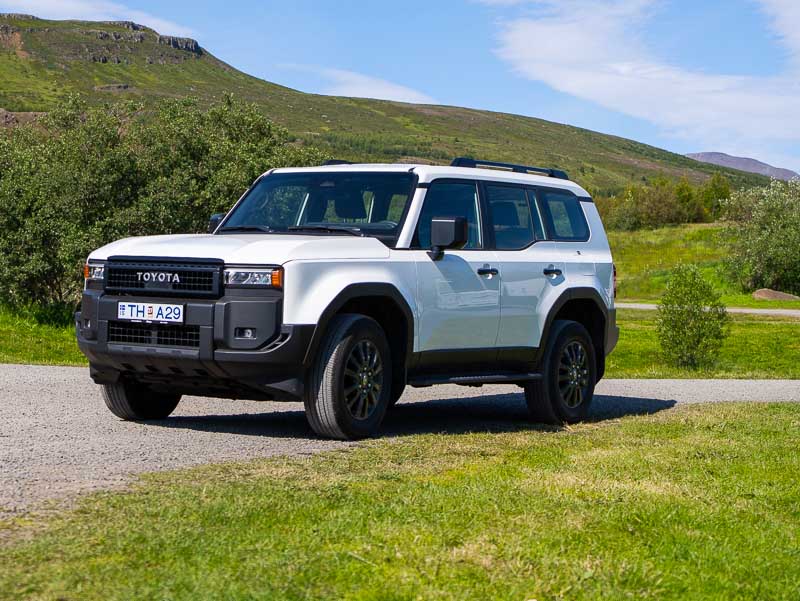
Frequently asked questions about driving Iceland’s Ring Road
Still have questions about the Ring Road in Iceland? Discover the answers below.
What is the Ring Road in Iceland?
Officially known as Route 1 or Highway 1, the Ring Road is Iceland’s major trunk road. It draws a loop around the whole island—and it’s the perfect opportunity for an Icelandic road trip.
How long is the Ring Road in Iceland?
In its entirety, the Ring Road is 1,322 km (821 mi). If you were to drive without stopping, it would take you somewhere between 17 and 19 hours.
Does Ring Road loop around?
The Ring Road in Iceland takes its nickname from the fact that it draws a ring or loop around Iceland. So, if you set off from Reykjavík, you can arrive back in the capital having completed a full circle of the country.
What is the speed limit on the Ring Road?
The speed limit on Iceland’s paved roads, including the Ring Road, is 90 km/h (55 mi/h). If you pass through a town, you may need to go more slowly, between 30 and 50 km/h (20-30 mi/h).
How far is the total distance of the Ring Road in Iceland?
The total distance of the Ring Road in Iceland is 1,322 km (821 mi).
What is the best time of year to drive the Ring Road in Iceland?
The Ring Road is the perfect route for an Icelandic road trip in any season.
If you’re planning to do it in winter, be aware that there can be snow on the road. In very serious conditions, stretches of the highway may be temporarily closed.
However, whether in snow or in summer sunshine, it’s a beautiful and rewarding trip.
What are the driving conditions like on the Ring Road in winter?
While the Ring Road is the country’s major road, local road conditions can sometimes be challenging in winter. It’s important to take particular care when driving over mountain passes or areas of moorland. Some areas can also be icy.
That said, the road conditions are regularly monitored and any snow disruptions are usually quickly cleared. You can check up-to-date information on road conditions and closures at umferdin.is.
Where can I find a detailed map of the Ring Road in Iceland?
Google Maps is the most relied upon map of the Ring Road in Iceland, by visitors and locals alike. You can find our Ring Road map here.
If you want a physical map, Michelin, Lonely Planet, and National Geographic all have reliable maps you can purchase.
What are the must-see stops along the Ring Road in Iceland?
As the Ring Road draws a loop around the whole of Iceland, it allows you to conveniently visit many of the must-see stops in all of the country.
Some of our favourites include:
- Jökulsárlón and Diamond Beach. Here, glacial meltwater fills an enormous lagoon on which icebergs drift. At the Diamond Beach, these icebergs melt on the black sand.
- Vík and Reynisfjara. Vík is one of the most picturesque villages on the south coast of Iceland. Don’t miss the atmospheric Reynisfjara beach.
- Lake Mývatn. It’s one of the top sights in North Iceland: a vast lake in a lava field, surrounded by strange rock formations.
- Akureyri and Eyjafjörður. Akureyri, the “Capital of the North”, sits on the Eyjafjörður, a deep fjord known for its whale watching.
- See also our guido to Off-the-Beaten-Path Destinations for Adventurous Travelers
Are there any unique attractions in East Iceland along the Ring Road?
East Iceland is one of the most sparsely inhabited—and scarcely visited—areas in Iceland. But it offers a lot to see and do nonetheless.
The region is best known as the Eastfjords, thanks to its scenic coastline. These fjords are sprinkled with tiny villages, such as Fáskrúðsfjörður, which was first settled by French fishermen.
It’s worth stopping to take photos of Búlandstindur, the iconic mountain by the side of the Ring Road. If you’re an experienced walker, you can also hike up to the summit.
Egilsstaðir is the main town in East Iceland, and it’s definitely worth a visit. Journey down the vast Lake Lagarfljot to see Hengifoss waterfall, one of the largest in Iceland.
Is the Ring Road in Iceland worth it?
Travelling the Ring Road in Iceland is definitely worth it, if you have the time. There’s no better way to see the country’s natural diversity, and it’s simply a beautiful drive.
Of course, if you’re going anywhere at all in Iceland, you’ll likely have to travel in part on the Ring Road.
Is the Ring Road paved?
The Ring Road is entirely paved for all of its 1,322 kilometres. You won’t need an off-road vehicle or 4x4 to drive it.
How much is the price of gas in Iceland?
Iceland is one of the most expensive countries in the world for petrol. However, as they do everywhere, these prices often go up and down.
According to Global Petrol Prices, Iceland’s average petrol prices are $2.28 per litre. Typically, you’ll pay somewhere between $2 and $3 per litre.
How long does it take to do the Ring Road?
The Ring Road is 1,322 kilometres (821 mi). If you were to drive it continuously without stopping, it would take you about 18 hours.
To enjoy your trip, we recommend taking 6 or 7 days as a minimum. However, most people will spend 10 days travelling the Ring Road—or even longer.
How many days should you spend driving the Ring Road in Iceland?
On the Ring Road in Iceland, you can find plenty to do, however long you want to travel. We recommend 6 or 7 days as a minimum. But you can do much more.
Can you complete the Iceland Ring Road in 7 days? What is a recommended itinerary?
6 or 7 days is the minimum length of time we would recommend to spend on Iceland’s Ring Road. If you’re planning on a shorter trip in Iceland, you could use the following itinerary:
- Day 1: Reykjavík to Vík. 188 km (117 mi)
- Day 2: Vík to Höfn. 270 km (168 mi).
- Day 3: Höfn to Egilsstaðir. 250 km (155 mi).
- Day 4: Egilsstaðir to Akureyri. 247 km (153 mi).
- Day 5: Akureryi to Borgarnes. 314 km (195 mi).
- Day 6: Borgarnes to Reykjavík. 75 km (47 mi).
Is a 10-day itinerary sufficient to explore the Ring Road in Iceland thoroughly?
10 days is a good length of time to see the best of Iceland’s Ring Road. It means that you don’t have to do too much driving each day. Plus, it will give you plenty of opportunities to see the best sights.
Can you drive the Ring Road in 5 days?
While you theoretically could drive the Ring Road in 5 days, you would be quite rushed and you’ll certainly miss out on some of the best things Iceland has to offer. We would recommend you spend more time enjoying the drive, such as a week or more.
Do you need a 4x4 for Iceland’s Ring Road?
No, you do not need a 4x4 if you’re driving Iceland’s Ring Road. As the roads are entirely paved, a standard passenger car will suffice.
That said, if you do plan to visit the highlands or drive on an F-road in Iceland, you will need a 4x4 SUV.
What are the tips for renting a car for the Ring Road in Iceland?
When renting a car for the Ring Road, it’s worth checking that your vehicle is prepared for what you need it to do:
- Book ahead. You don’t want to be disappointed.
- If you’re travelling in winter, check that it has winter tyres. You’ll just need to ask your rental operator.
- If you’re heading into the highlands, you’ll need a four-wheel drive. If you’re sticking to the Ring Road, a standard passenger car will be sufficient, though.
- Consider an electric vehicle for cheaper fuel costs. Just be aware that you won’t be able to drive an EV on highland F-roads.
- Check the rental details. Before you drive off, confirm what you’re insured for, how many drivers you’re allowed, and how many miles you’re entitled to drive.
How frequently are gas stations found along the Ring Road, and what are their operating hours?
You will find plenty of gas stations on the Ring Road, in pretty much every village. These are often open 24/7, but in remote areas they’re unlikely to be staff during the night.
What safety tips should I follow when driving the Ring Road in Iceland?
The Ring Road is a beautiful drive. To enjoy it to the full, it’s important to follow some basic safety tips:
- Stick to the speed limit. That’s 90 km/h out of town, and between 30 and 50 km/h in town.
- Check the weather before you travel. This is the most important piece of advice we can give. In thick fog, high winds, or heavy snow, driving is not much fun. It’s best avoided.
- Confirm your car’s condition and cover when you pick it up. Double check your hire car is fit to drive before you drive it away. You’ll want to have sufficient cover for any incidents or gravel damage too.
Are there recommended places to eat along the Ring Road?
You’ll find places to eat in all of the major towns and villages along the Ring Road. There’s plenty of choice. For example, Vík, Egilsstaðir, and Akureyri have lots of high quality options.
What are the camping facilities like along the Ring Road?
There are many camping facilities in Iceland and you’ll find many of them a short distance from the Ring Road. Typically, they’ll have dedicated spaces for tents as well as for campervans.
Most campsites come equipped with the basics you need to be comfortable, such as toilets, showers, and washing facilities.
Is it necessary to book accommodation in advance when travelling the Ring Road in Iceland?
We always recommend that you book in advance when travelling in Iceland. This is particularly true if you’re travelling in peak seasons such as summer.
If you don’t book, you may be disappointed. Plan ahead and avoid the risk.
Can you drive around Iceland in a day?
It’s physically possible to drive around the Ring Road in a day (about 18 hours of continuous driving). But it might not be much fun. It’s much more enjoyable to take it slow and enjoy everything that Iceland has to offer.
What language is spoken in iceland?
The official language spoken in Iceland is Icelandic. However, many locals also speak English fluently, so you won't have any trouble communicating with the locals. If you're planning on driving around the country, it's always helpful to learn a few basic phrases in Icelandic as a sign of respect to the local culture.
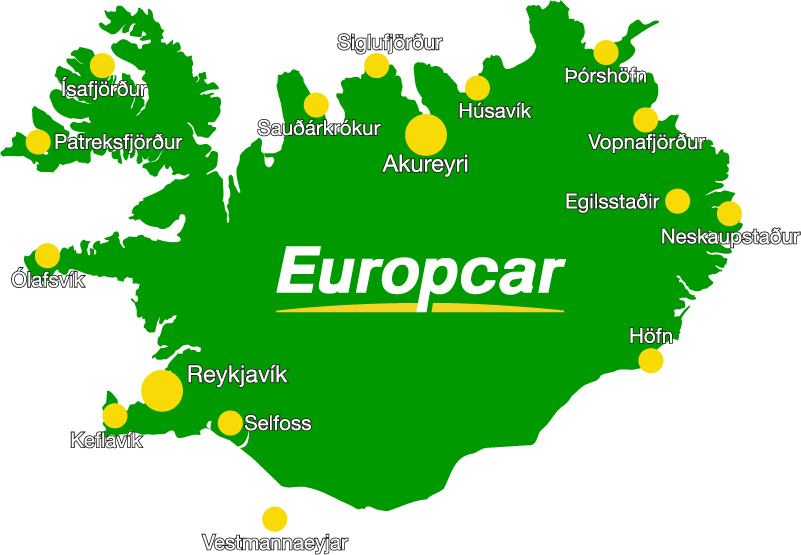
Tour Iceland’s Ring Road with Holdur Car Rental
Now that you're prepared with everything you need to know about driving the Ring Road, it's time to choose your vehicle. At Höldur, we are Iceland’s largest vehicle rental operator, offering a fleet of over 8,000 vehicles. From compact cars and electric vehicles to 4x4 SUVs and motorhomes, we have the perfect option for your journey. With rental outlets across the country, you have complete flexibility to start your adventure anywhere.
Explore our fleet and book the best car rental for your Iceland Ring Road trip today.





